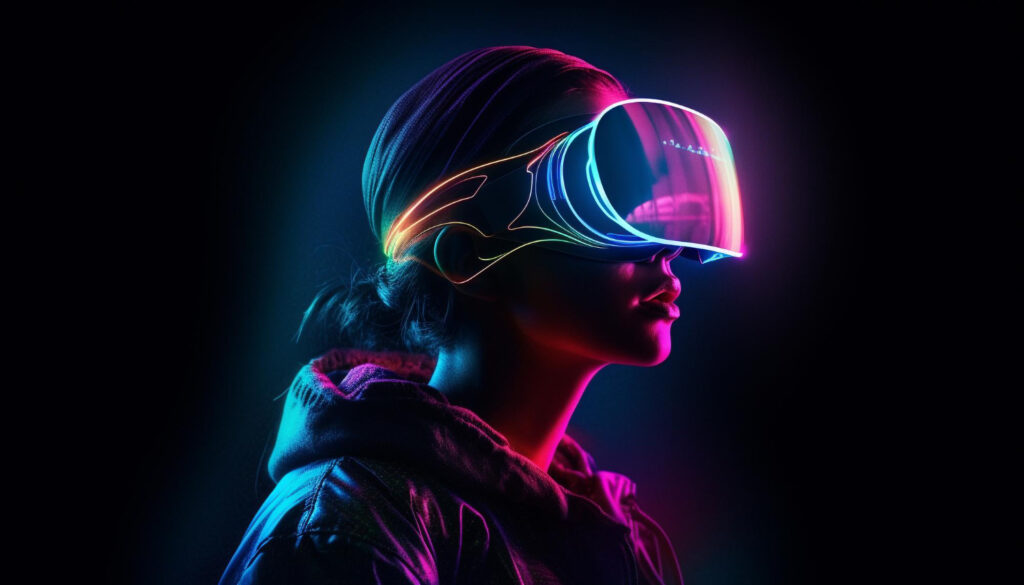
Revolutionizing Construction: The Impact of VR and AR Technologies
Introduction
In recent years, the construction industry has witnessed a technological revolution with the integration of Virtual Reality (VR) and Augmented Reality (AR) technologies. These cutting-edge innovations are reshaping how projects are planned, designed, and executed. From enhancing visualization to improving collaboration and safety, VR and AR are proving to be indispensable tools in the construction sector.
Enhanced Visualization
One of the primary advantages of VR and AR in construction is their ability to provide immersive and detailed visualizations of projects. With VR, stakeholders can step into a digital representation of a building or infrastructure project, allowing them to explore every detail before construction begins. AR overlays digital information onto the real-world environment, enabling users to see how proposed structures would fit within existing spaces.
VR Example: Autodesk Revit with VR integration – Revit is a widely used BIM (Building Information Modeling) software that allows architects and engineers to create detailed 3D models of buildings. With VR integration plugins like Enscape or Autodesk’s own VR Viewer, users can experience their Revit models in immersive VR environments for enhanced visualization and client presentations.
AR Example: Trimble Connect – Trimble Connect is a collaborative platform that supports AR functionality. Using Trimble’s mixed reality solutions like HoloLens, construction teams can overlay BIM data and 3D models onto the physical job site, enabling real-time visualization and coordination during construction.
Improved Design and Planning
VR and AR technologies are revolutionizing the design and planning stages of construction projects. Architects and engineers can create 3D models and prototypes that can be experienced in VR, allowing them to identify potential issues and make adjustments early in the process. AR enables on-site visualization, allowing construction teams to overlay digital models onto physical spaces, facilitating better decision-making and coordination.
VR Example: IrisVR Prospect – IrisVR Prospect is a VR software that directly integrates with design software like SketchUp, Rhino, and Revit. It allows architects and designers to convert their 3D models into VR experiences, facilitating design reviews, walkthroughs, and virtual prototyping for improved design and planning accuracy.
AR Example: BIM 360 Layout – BIM 360 Layout by Autodesk is an AR-enabled solution that helps construction teams accurately position and verify building components in the field. Using AR on tablets or mobile devices, workers can visualize digital design models overlaid onto the physical site, ensuring precise layout and alignment during construction.
Enhanced Collaboration
Collaboration is key in construction projects, and VR and AR are facilitating communication and cooperation among stakeholders. Virtual meetings conducted in VR environments enable teams located in different parts of the world to collaborate in real-time, reducing the need for travel and saving time and costs. AR-powered collaboration tools allow on-site workers to access essential information and instructions hands-free, improving productivity and efficiency.
VR Example: VRcollab – VRcollab is a VR collaboration platform designed specifically for the construction industry. It enables project stakeholders to conduct virtual design reviews, coordinate workflows, and make real-time decisions in immersive VR environments, fostering enhanced collaboration and communication among distributed teams.
AR Example: Fieldwire – Fieldwire is a construction management platform with AR capabilities for on-site collaboration. Its AR feature allows workers to access digital blueprints, 3D models, and task instructions overlaid onto the physical job site using smartphones or tablets, facilitating efficient communication and collaboration among field teams.
Safety Training and Simulation
Safety is paramount in the construction industry, and VR and AR technologies are being used to enhance safety training and simulation. VR simulations enable workers to practice potentially hazardous tasks in a safe virtual environment, helping to reduce accidents and injuries on the job site. AR can provide real-time safety information and warnings, such as identifying potential hazards or guiding workers to emergency exits, enhancing on-site safety protocols.
AR Example: SafetyCulture iAuditor – While not strictly an AR tool, SafetyCulture’s iAuditor app supports AR-based safety inspections and audits. Inspectors can use AR features on mobile devices to overlay digital checklists, safety guidelines, and hazard identification tools onto physical job sites, enhancing safety protocols and compliance.
Cost and Time Savings
Implementing VR and AR technologies in construction projects can lead to significant cost and time savings. By detecting and resolving design flaws early in the process, projects can avoid costly rework and delays. Virtual walkthroughs and digital prototyping can help stakeholders visualize the final product accurately, reducing the likelihood of costly changes during construction. Additionally, the use of VR and AR can streamline communication and decision-making, resulting in more efficient project management and faster delivery times.
VR Example: Fuzor – Fuzor is a VR and BIM integration platform that helps construction professionals optimize project schedules and costs. By visualizing construction sequences, clash detection, and design changes in VR, teams can identify and resolve issues early, leading to cost savings and reduced project timelines..
AR Example: PlanGrid – PlanGrid is a construction productivity software that includes AR features for field teams. With PlanGrid’s AR functionality, workers can access digital blueprints, RFIs, and project documents overlaid onto the physical job site using smartphones or tablets, streamlining workflows and reducing rework costs.
Conclusion
Virtual Reality and Augmented Reality technologies are transforming the construction industry, offering unprecedented opportunities for improved visualization, design, collaboration, safety, and cost savings. As these technologies continue to evolve, their adoption is expected to become more widespread, making VR and AR indispensable tools for construction professionals around the globe. Embracing these innovations will not only drive efficiency and productivity but also pave the way for a safer, more sustainable future in construction.
